
views
Finding the Right Support
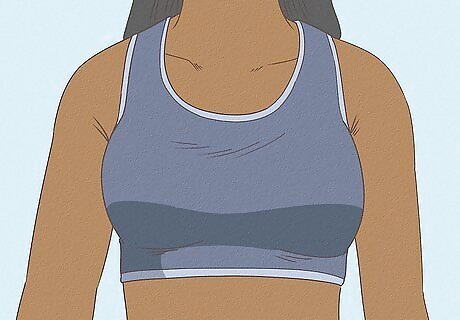
Select a sports bra made of moisture-wicking material. You want your sports bra to be made of moisture-wicking material that is breathable. Most new sports bras these days contain technology to wick away sweat, making them the ideal choice for working out. Try to steer clear of cotton, which tends to soak up moisture and stay wet. Choosing a moisture-wicking material will also help to regulate the temperature of your body as you're working out.
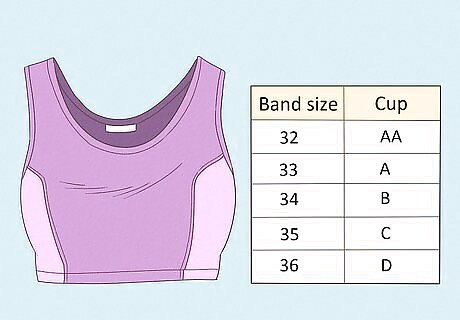
Choose a sports bra that comes in typical bra sizes. You want your sports bra to be the same size as your correctly-fitted regular bras. It should have a cup size as well as a band size, ensuring great support. Avoid buying sports bras that only come in a small, medium, large, etc.
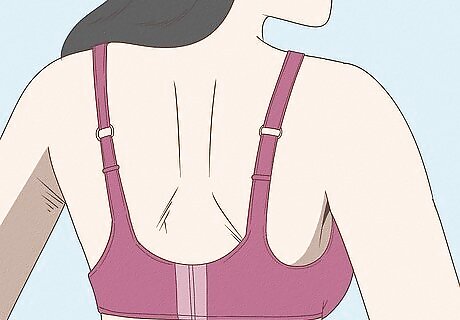
Opt for sports bras that have a clasp or are adjustable. Pullover sports bras aren’t ideal because they can’t be adjusted if necessary and are much more stretched out than other types. Choose a sports bra that has adjustable straps or a clasp. With a band clasp, you’ll be able to move from the innermost hook to the outer hook as your bra stretches.
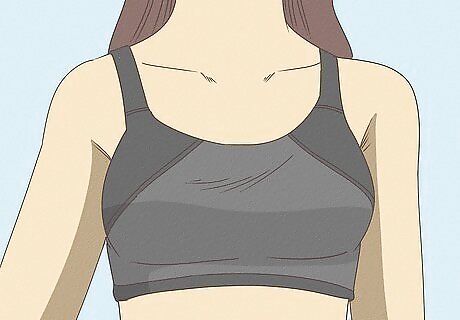
Invest in a high-quality sports bra. While it can be tempting to buy that $5 pullover sports bra, it most likely doesn’t have the support and structure that your chest needs. Finding a sports bra that fits you well is incredibly important for keeping your chest supported and your ligaments undamaged, so invest in a high-quality bra.
Selecting a Style

Match your sports bra to your activity. You can wear a different kind of sports bra while doing yoga than you would while running or playing an intense sport. Choose a low-impact bra when participating in low-impact sports, and wear a high-impact bra for high-impact sports. A low-impact bra doesn’t need to have as much support as a high-impact one. High-impact bras should be in an encapsulation style with molding, and definitely made of moisture-wicking material.
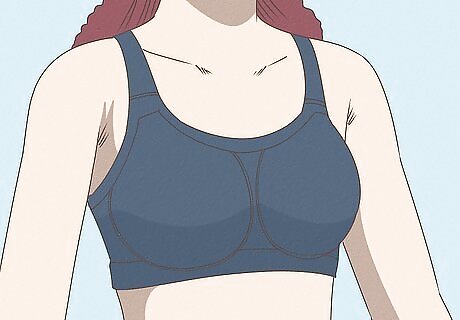
Choose encapsulated bras over compression bras. An encapsulated bra is one that has separate cups, as opposed to a compression bra, which pulls over your head and does not have separate cups. Because your breasts move side-to-side as well as up and down when you exercise, it’s important for your sports bra to have separate cups to provide better stability. This helps to give support to each individual breast and allows for better temperature regulation. Wearing a compression-style bra is all right if you have an A or B cup size or are doing a low-impact workout, but an encapsulated bra is always best. Encapsulated bras are especially important if you have a larger chest.
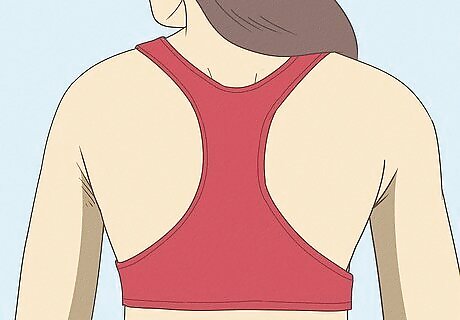
Decide on a racerback sports bra for better support. A racerback sports bra cinches in the back, meaning the bra is held much closer to your body. This provides good support while also eliminating annoying straps that can fall off of your shoulders.
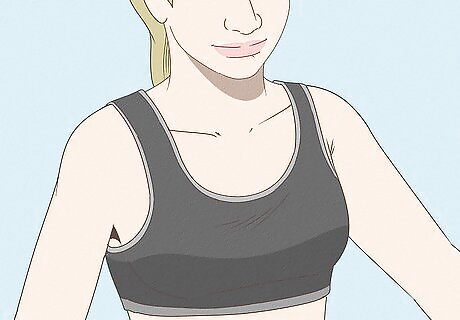
Wear a sports bra with wide straps for better weight distribution. If you have larger breasts or definitely want your sports bra to be adjustable, choose one with wide straps. These straps help distribute the weight of your chest more evenly, and they’re usually padded as well. Straps shouldn’t dig into your shoulders — if you find the straps painful or making your neck sore, consider going with a different size.
Trying the Bra On
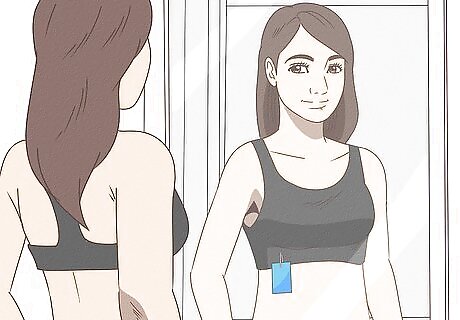
Try the sports bra on before purchasing it. You won’t know if the sports bra is right for you unless you try it on to see how it fits. Use a store’s dressing room to see how the sports bra looks and feels. If you’re buying a sports bra online, don’t take the tags off until you’ve tried it on first.
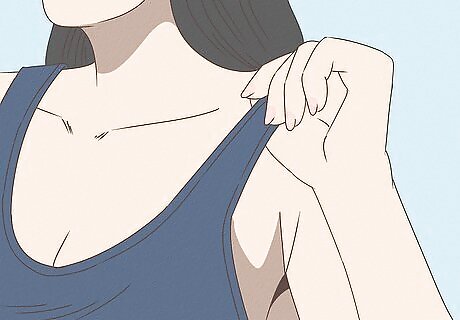
Pull on the straps to test their stretch. When it comes to sports bra straps, you don’t want them to be super stretchy. Put your fingers around the top of one strap, holding it in place. Tug on the center of the cup that corresponds to the strap, seeing how much the strap stretches. You want straps that don’t stretch too much when you pull on them, because this is a sign that they won’t provide great support.
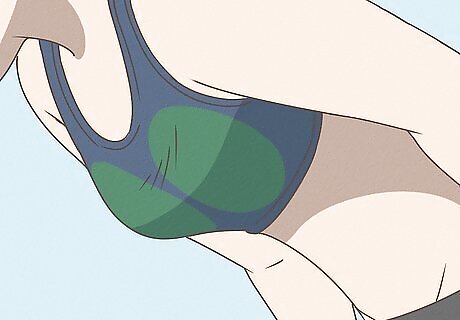
Make sure the cup holds your whole breast. You don’t want to be popping out of your sports bra — this won’t give you great support at all. Check to see that your breasts fit inside each cup. If they don’t fit, you need a larger cup size. You can even try bending over while wearing the sports bra to make sure nothing spills out.
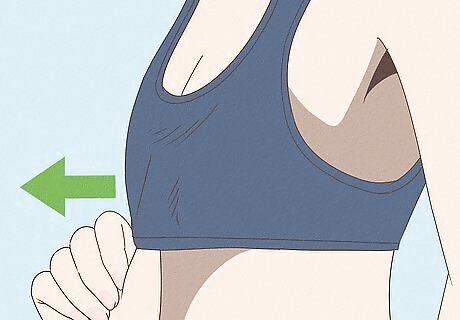
Use your finger to test the band. Slip your finger in-between the band and the front of your chest. Try to pull the band away from you using that same finger. If you can pull the band out more than an inch from your chest, this is a sign that the band is too loose and you need better support.
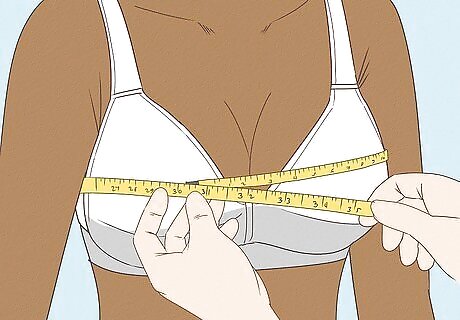
Get fitted by an expert. When in doubt, get an expert’s help. Go to a store that has employees who are knowledgeable about bra fittings and have them fit you for a sports bra. They’ll be able to measure you accurately, allowing you to choose a sports bra that will support you the best. Multiple panels provide greater all-around support. Look for soft seams around the cups. Generally, more fabric means more support. Racer back styles should be wide where they meet the strap to spread out the support in the back.
Replacing Your Sports Bras
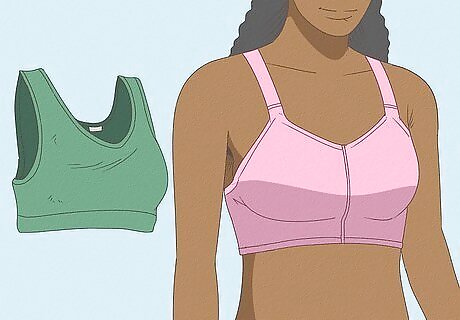
Replace your sports bras every 4-6 months. If you’re using your sports bras regularly, they’re going to stretch out over time. For this reason, it’s important to buy new ones every 6 months so that you always have great support. How often you buy a new sports bra will depend on how active you are. If you wear the same sports bra once a week, it could last up to a year, while if you wear the same sports bra 3 times a week, it’s going to be all stretched out after 4-6 months. If you exercise 4-5 days a week, you should have 4-5 sports bras that you rotate. Wearing the same one over and over again will cause the sports bra to stretch out much faster.

Buy a new bra if the band is riding up on your back. The band of your sports bra is even more important than the straps — this is what gives you the most support. If your band is riding up on your back when you’re moving around or it’s super stretched out, it’s time to get a new sports bra. If you’re using the tightest hook on your band, this may be a sign that your bra is stretched out and you should think about replacing it. Alternatively, it could mean you have a narrow back. You can also test the band by reaching your arms up over your head. If the band moves up your back, it isn’t a great fit.

Find a new sports bra if the straps are all stretched out. If you pull on your straps and they don’t have much give anymore, they’re likely all stretched out. Straps that are falling off of your shoulders when you’re exercising need to be retired. If your straps are falling off of your shoulders and are adjustable, see if they can be tightened before deciding whether or not you need a new sports bra.

Invest in another bra if your chest hurts after working out. If you finish a workout and your chest is in pain, this is the ultimate sign that your sports bra isn’t working for you. The same goes if you’re working out and your chest is bouncing all around. If your sports bra isn’t giving you the right support, it’s time to get a new one.














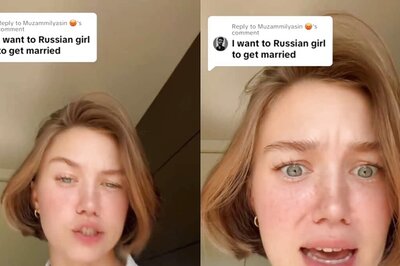
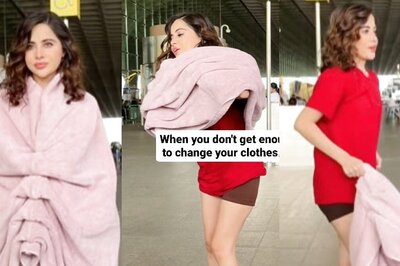
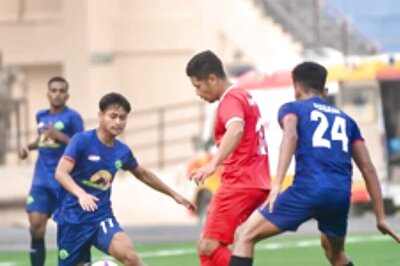
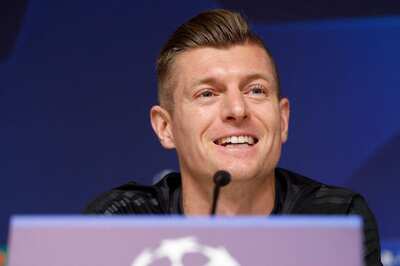
Comments
0 comment